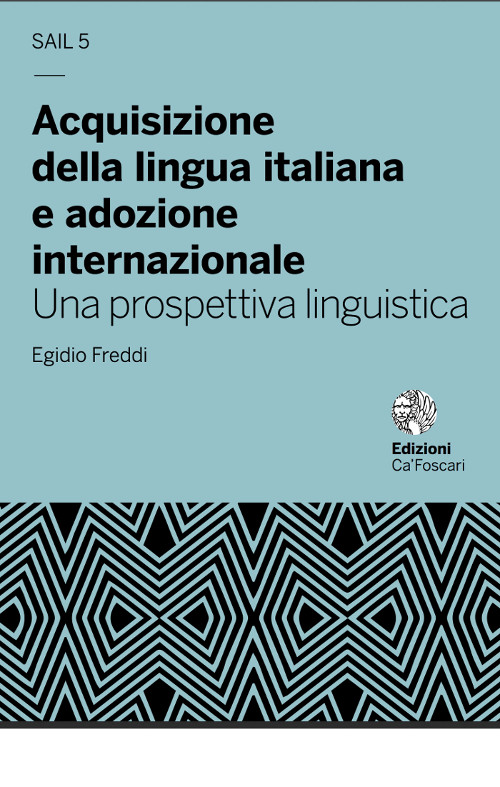 home
home SCUOLA
SCUOLA LIBRI SCUOLA E ADOZIONE
LIBRI SCUOLA E ADOZIONE ACQUISIZIONE DELLA LINGUA ITALIANA E ADOZIONE INTERNAZIONALE
ACQUISIZIONE DELLA LINGUA ITALIANA E ADOZIONE INTERNAZIONALEAcquisizione della lingua italiana e adozione internazionale

E' stato pubblicato il libro digitale:
"Acquisizione della lingua italiana e adozione internazionale. Una prospettiva linguistica".
di Egidio Freddi - Edizioni CĂ Foscari
L'acquisizione di una lingua avviene nel momento in cui essa viene assimilata in modo completo e stabile in una situazione naturale, spontanea e gratificante. Solitamente, questo quadro è compatibile con la lingua materna biologica. Esiste però anche una condizione estremamente particolare, e per alcuni aspetti unica: il caso dei bambini con adozione internazionale che si trasferiscono definitivamente nel nostro Paese. L'analisi del loro percorso di apprendimento dell'italiano è di notevole interesse scientifico perché apre un focus di studio sull'apprendimento linguistico in età evolutiva.
Il libro di Egidio Freddi rappresenta uno strumento estremamente importante e utile per genitori e insegnanti. E' forse il primo in Italia che affronta in modo specifico questo particolare aspetto dell'adozione internazionale.
Le peculiaritĂ che riguardano l'acquisizione di una nuova lingua "per adozione" che nel tempo diventerĂ la "prima lingua" e l'impatto sul percorso di apprendimento e sulla sfera emotiva sono ancora poco conosciute.
Auspichiamo che il mondo accademico possa approfondire ulteriormente l'argomento fornendo dati scientifici che possanno essere di supporto agli insegnanti che si occupano dei bisogni specifici degli alunni adottati con adozione internazionale.
